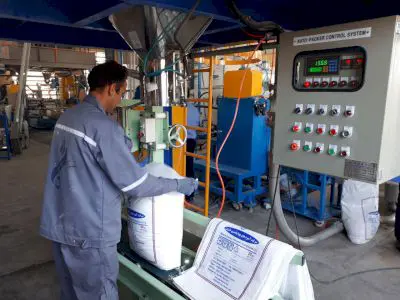Plastics are divided into the following three categories in terms of domestic production and molecular and polymer structure: Thermoplastic: The number of times plastic can be softened or hardened

Petrochemical polymers and plastics offer a wide range of properties and can be tailored to meet specific requirements. They can be molded into various shapes, sizes, and forms, making them suitable for diverse applications across multiple industries. Plastics are used in packaging, construction, automotive, electronics, healthcare, textiles, and consumer goods, among others. The versatility of these materials allows for innovation, product development, and improved functionality across industries.
Many plastics exhibit excellent durability and resistance to degradation, making them suitable for long-lasting applications. For instance, plastic pipes are known for their corrosion resistance and long service life. Plastic products can withstand harsh environmental conditions, chemicals, and wear, ensuring their longevity and reducing the need for frequent replacements. Plastics play a crucial role in ensuring safety and hygiene standards in various industries. Plastic packaging helps preserve and protect food, pharmaceuticals, and other perishable goods, preventing contamination and extending shelf life. Medical-grade plastics are used in healthcare settings for their sterile and non-reactive properties. Plastics also offer insulation and electrical safety in wiring and electronic components.
Petrochemical polymers and plastics provide designers and engineers with immense freedom to create innovative and aesthetically pleasing products. The ability to mold plastics into complex shapes, incorporate different colors, and combine with other materials allows for unique designs and functional advancements. This flexibility in design and manufacturing drives product differentiation and consumer appeal in the competitive global market.
Polyethylene is one of the most widely used plastics globally. It is produced from Ethylene and comes in different forms, including high-density polyethylene (HDPE) and low-density polyethylene (LDPE). PE is used in packaging materials, plastic bags, containers, pipes, toys, and various other applications. Polypropylene is another versatile plastic polymer. It is derived from propylene and exhibits excellent Chemical resistance and high melting point. PP is used in automotive parts, packaging materials, textiles, furniture, and various consumer goods.
Furthermore, with the progress in the industry of using polymer products, plastic products have also undergone many changes and now our country's plastic imports have reached half. Also, the technical knowledge of Petrochemical engineers of plastics and their types makes us have a better understanding of the future of this product as an export product. Plastics are divided into the following three categories in terms of domestic production and molecular and polymer structure:
- Thermoplastic: The number of times plastic can be softened or hardened.
- Thermostat: Plastics that do not regenerate by melting after solidification.
- Elastomer: Special and rare plastics that have the elastic force and return to normal after deformation.
PVC is a widely used thermoplastic polymer. It is produced from vinyl chloride monomers and is known for its durability, versatility, and flame-retardant properties. PVC is used in pipes, window frames, flooring, cables, medical devices, and other construction and industrial applications. Polystyrene is a rigid and lightweight plastic. It is produced from styrene monomers and is available in various forms, including expanded polystyrene (EPS) used for insulation and packaging, and solid polystyrene used for disposable cutlery, CD cases, and other consumer goods.
PET is a strong and transparent polymer. It is commonly used for making beverage bottles, Food containers, polyester fibers for textiles, and packaging materials. PET is valued for its recyclability and is widely collected for recycling purposes. PVA is a water-soluble polymer that is used in various applications, such as adhesives, coatings, and textile sizing. It offers excellent adhesive properties and is commonly found in products like glue sticks and wood glue. Polycarbonate is a durable and transparent plastic that exhibits high impact resistance. It is used in the production of safety glasses, automotive parts, electrical components, and CD/DVD discs. Polyurethane is a versatile polymer with a wide range of applications. It is used in foam products, flexible and rigid foams, coatings, adhesives, and sealants. PU can be found in furniture, mattresses, footwear, and insulation materials.
Therefore, with a closer look at this issue, it can be understood that the production of polymers and granules in our petrochemical is very important. Currently, the largest imports of petrochemical industries are in the form of granules, because these products are not found naturally and must be produced.
Next, it should be noted that granules are much more expensive than polymers and their production is one of the most costly Petrochemicals jobs. Of course, the second-class products of polymer and plastic granules are made in small factories and institutions, and we will not need foreign countries for any daily plastic products. Disposable container factories, elastic plastics, rubber, and construction polystyrene and masterbatch make us the least dependent on imports; but we still have a long way to go to export.
Petrochemical polymers and plastics are generally more cost-effective compared to alternative materials. Plastic production processes are efficient, and the raw materials used, such as ethylene and propylene, are derived from Petroleum or natural gas, which are abundant and relatively low-cost resources in many regions. The cost-effectiveness of plastics contributes to their widespread use and availability in the global market. Plastics are lightweight materials, which can provide significant advantages in various applications. For example, in the automotive industry, the use of lightweight plastics helps reduce the overall weight of vehicles, leading to improved fuel efficiency and reduced emissions. Similarly, lightweight plastic packaging reduces transportation costs and energy consumption during shipping.





